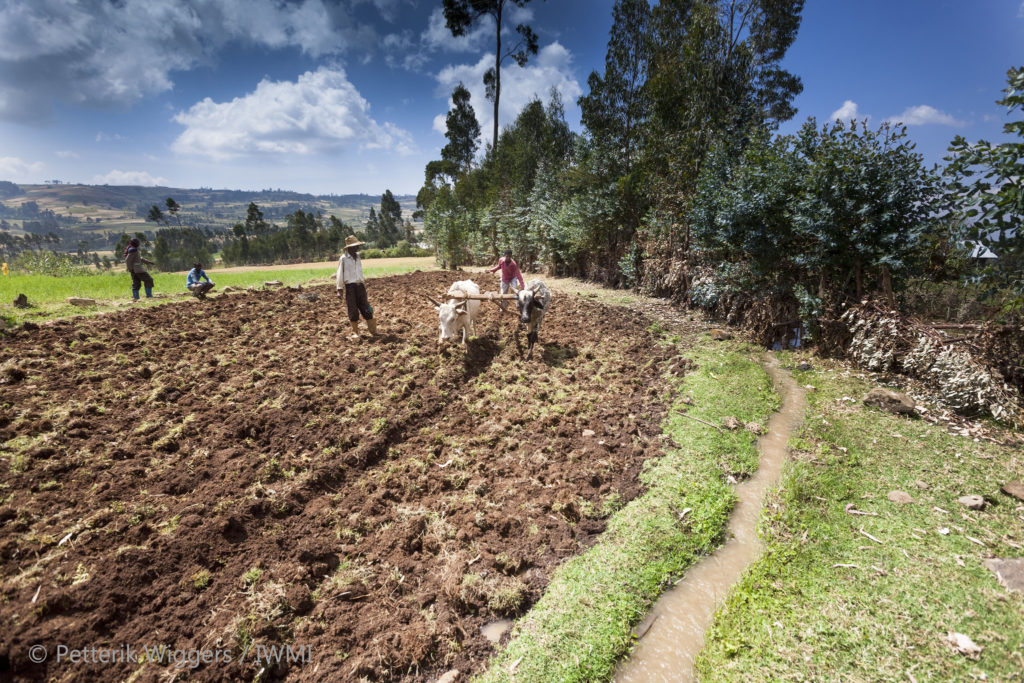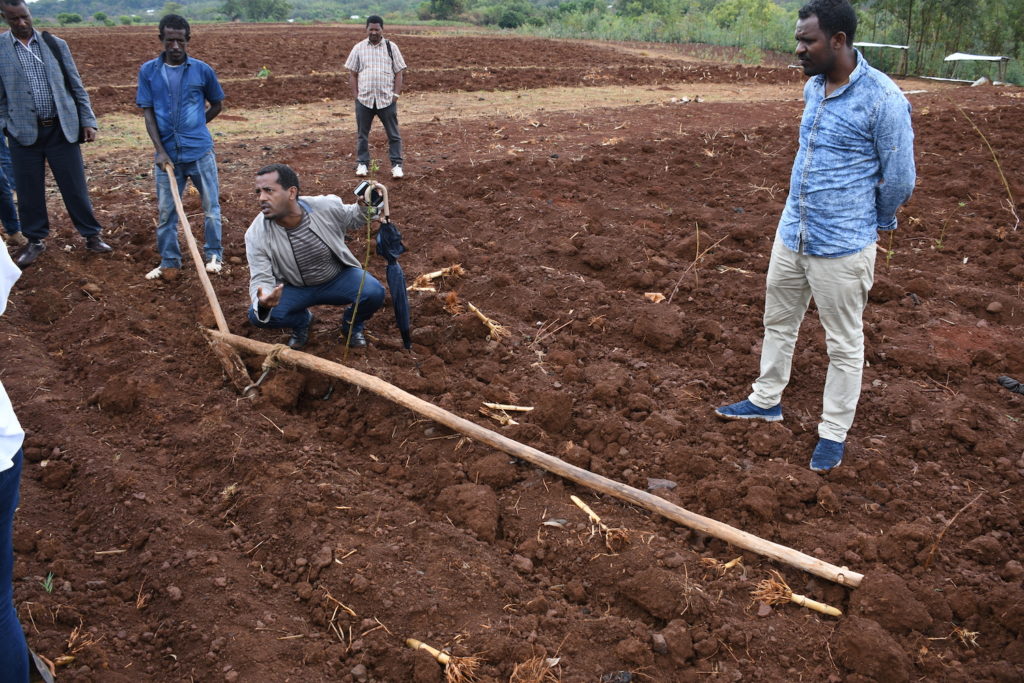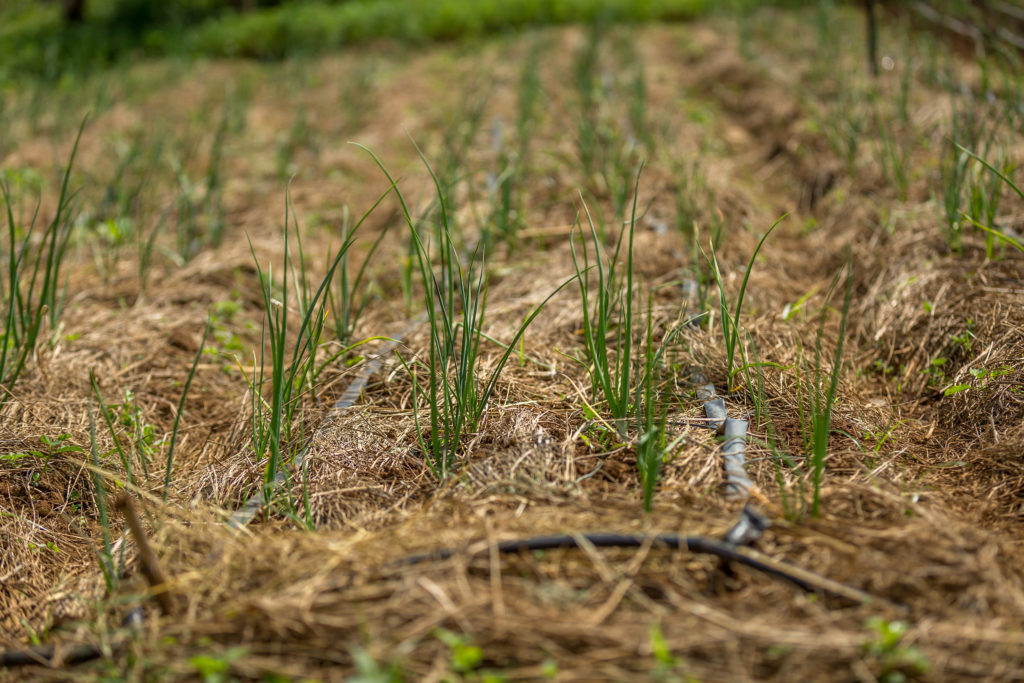Habtamu Muche is currently working as a lecturer at the University of Gondar, Ethiopia. In 2016, he joined ILSSI’s capacity development program as a graduate student, while enrolled at Bahir Dar Institute of Technology, Bahir Dar University. For two years, Habtamu Muche studied the how the Berken plow can be used to improve infiltration and crop productivity in the Highlands of Ethiopia. He carried out his MSc thesis together with researchers at Bahir Dar University and the International Water Management Institute, funded through ILSSI.
You are a co-author of a paper on the benefits of using the Berken plow in the Ethiopian Highlands. How did you get interested in this topic?
Conventional tillage is the major cause of soil and water losses in Ethiopia. For thousands of years, farmers in Ethiopia practiced repeated cross-plowing with the traditional tillage implement, the Maresha. Long-term use of the Maresha is believed to create a hardpan, thereby restricting water movement and root growth, while decreasing yield of crops. In 2015, we tested deep tillage through manual digging and learned that breaking the hardpan can increase rainwater infiltration. However, we did not have the right implement for farmers to practice deep tillage. We heard that a new tillage implement, known as the Berken, had been developed by Aybar Engineering to enable farmers to break the hardpan. We initiated a study to assess its impact on hydrological and biophysical processes.
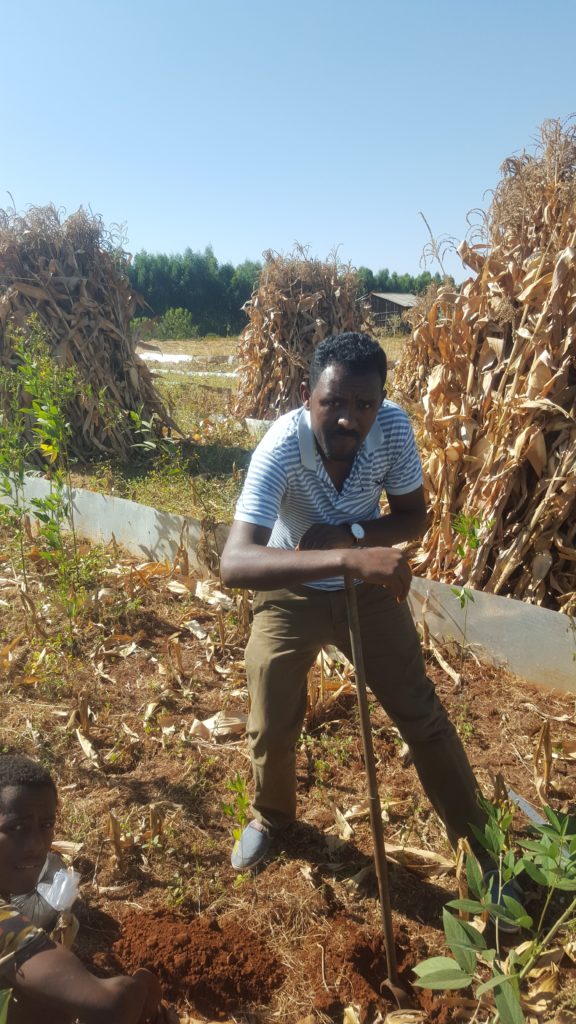
What’s the most unexpected thing you found?
Looking at the Berken plow, we first thought it was a simple modification of the Maresha, with little or no impact. However, we found that the Berken affects several hydrological variables in positive ways. For example, the tillage depth increased more than we expected and disrupted the restrictive hardpan layer because the plow cuts the soil deep at the center and shallow on the sides. Second, the infiltration rate was significantly improved—tilling the soil at that depth increases the microscopic channels in the soil that allow water to move from the cultivated surface and to the subsurface layer of the soil. We also saw that rainwater runoff and sediment yield reduced because each furrow laid along the contour of the steep slopes helped slow the movement and generation of runoff and sediment. Finally, root development and grain yield also improved. The higher water infiltration might have led to more moisture being available deeper in the soil, and that has positively affected maize grain yield.
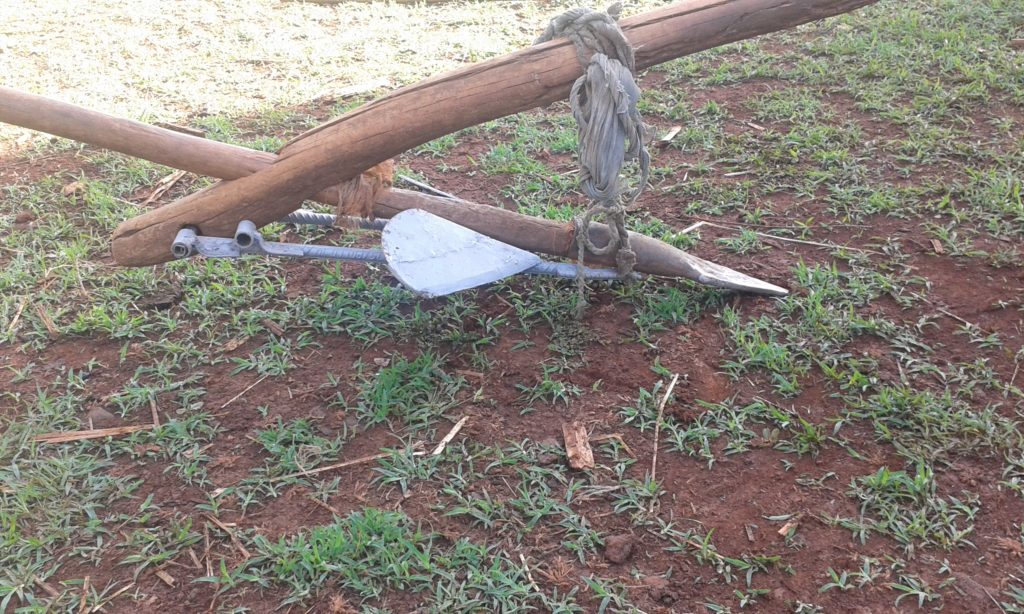
What did you learn about how innovation and new inventions like the Berken plow come about?
I have learned how a simple innovation like the Berken plow solves a great challenge we faced in improving infiltration. It is not acceptable to tell farmers to manually dig 60 cm into the soil to break up the hardpan. So, I learned that we need to work more on innovations to solve farmers’ problems.
What was it like to work on a research trial with a private sector entrepreneur?
After we realized that breaking the hardpan was effective in reducing rainwater runoff, thereby improving infiltration, we wanted to test the new Berken plow in the field. We helped the inventors at Aybar Engineering by sharing our research results. It is interesting to work with the private sector because they are working on the ground with farmers. They are manufacturing and selling tools that have good impacts for farmers. As a graduate student, I felt happy to work on a tool that is going to be used by many farmers.
What do you hope to work on in the future?
In the future, I have planned to work on the impact of the Berken at the watershed scale. Conservation structures, such as soil bunds, may become more effective if farmers can use the Berken to plow the land in between the conservation structures.

